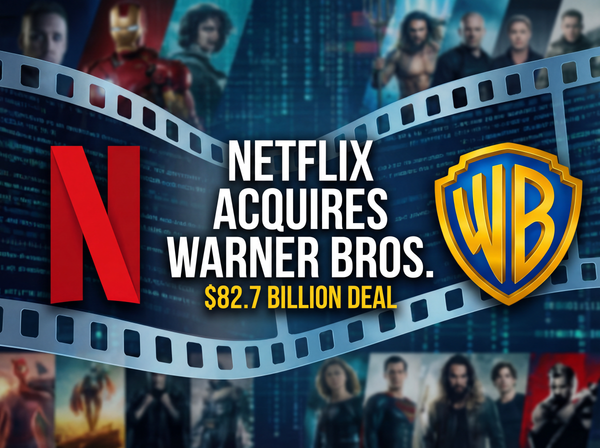Controlled IPOs: Dual-Class Shares
Going public is a pivotal moment for any company, offering access to vast pools of capital and enhanced visibility.
However, for many founders and long-standing owners, the traditional Initial Public Offering (IPO) model presents a dilemma: the need for capital often comes at the cost of relinquishing significant control and subjecting long-term vision to short-term market pressures.
The Controlled IPO is a strategic approach that allows companies to tap into public markets while ensuring that key stakeholders – typically founders or early investors – retain substantial voting power and thus, control over the company's destiny.
What is a Controlled IPO? The Dual-Class Share Structure
The most common mechanism enabling a controlled IPO is the implementation of a dual-class share structure. Instead of issuing a single class of common stock, a company creates two (or sometimes more) classes, each with different voting rights:
- Class A Shares: These are typically offered to the public in the IPO. They generally carry one vote per share, or sometimes even less.
- Class B Shares (or other classes): These are usually retained by the founders, management, or other insiders. Crucially, these shares carry superior voting rights, often ten or twenty votes per share, or even more.
This disparity in voting power ensures that even if the Class B shareholders own a minority of the economic equity, they maintain a majority of the voting control, effectively insulating the company from hostile takeovers and undue influence from outside shareholders.
Why Do Companies Choose a Controlled IPO?
The motivations behind opting for a controlled IPO are often deeply rooted in preserving a company's unique culture and long-term strategic vision:
- Preserving Founder Vision and Culture: Many founders believe that their unique vision and operational philosophy are critical to the company's success. A dual-class structure allows them to pursue long-term strategies without being pressured by public market demands for quarterly results or short-term profit maximization.
- Insulation from Short-Termism: Public markets can be volatile and reactive. A controlled structure allows management to make difficult, long-term investments or strategic pivots that might temporarily depress stock prices but are deemed essential for future growth, without fear of immediate shareholder backlash or activist investor intervention.
- Protection from Hostile Takeovers: With voting control concentrated, the company becomes virtually immune to hostile takeovers, providing stability and allowing management to focus on operations rather than defending against unwanted suitors. This also significantly impacts the landscape for friendly M&A, as any significant transaction would require the consent of the controlling shareholders.
- Faster, More Decisive Leadership: Concentrated voting power can enable quicker decision-making, as management doesn't need to navigate as much dissent or extensive shareholder approvals for major strategic moves.
- Maintaining Identity and Mission: For companies with strong social missions or unique editorial policies, a controlled structure ensures that core values are not diluted by purely financial objectives.
Iconic Examples of Controlled IPOs
Several prominent companies have gone public with dual-class share structures, often led by visionary founders:
- Meta Platforms (formerly Facebook): Mark Zuckerberg maintains significant voting control, allowing him to drive Meta's ambitious long-term bets, such as the metaverse.
- Alphabet (Google): Larry Page and Sergey Brin established a dual-class structure that keeps effective control in their hands, empowering long-term innovation.
- Ford Motor Company: A legacy example, the Ford family has maintained voting control through a special class of stock (Class B shares) since the company first went public in 1956, ensuring family influence over the direction of the automotive giant.
- The New York Times Company: The Sulzberger family has used a dual-class structure for decades to safeguard the newspaper's editorial independence.
The Debate: Criticisms of Controlled IPOs
While appealing to founders, controlled IPOs are not without controversy, often drawing criticism from corporate governance advocates and some institutional investors:
- Shareholder Disenfranchisement: Critics argue that public shareholders, despite providing the capital, have limited influence over the company's direction, effectively investing without a voice.
- Lack of Accountability: Without the threat of shareholder revolt or takeover, management may become less accountable, potentially leading to suboptimal performance or decisions that prioritize insiders' interests over broader shareholder value.
- Exclusion from Indices: Major stock indices like the S&P 500 often have rules that exclude companies with dual-class share structures, limiting their appeal to passive investors and potentially impacting liquidity. This stance highlights a broader trend among some exchanges and institutional investors globally who are increasingly scrutinizing, and sometimes disfavoring, companies with disproportionate voting rights.
- Potential for Underperformance: Studies have offered mixed results, but some suggest that companies with dual-class shares may underperform over the long run compared to those with single-class structures, though this is highly debated and often depends on the quality of the controlling leadership.
- Perceived Inequality: The inherent inequality in voting rights can create a perception of unfairness among investors, particularly if the company faces challenges.
- The Role of Sunset Clauses: To mitigate some of these concerns, some companies employing dual-class structures include "sunset clauses." These are provisions that cause the superior voting rights to expire after a certain period (e.g., 5, 7, or 10 years post-IPO), or upon a specific event, such as the departure of the founder. While not universally adopted, they represent a compromise aiming to balance founder control with eventual shareholder democracy.
For Investors and Analysts: What to Look For
When evaluating a company with a controlled IPO structure, investors and M&A professionals need to look beyond traditional metrics:
- Quality of Control: Assess the track record, vision, and integrity of the controlling individuals or group. Are their interests truly aligned with long-term value creation for all shareholders? This becomes paramount when evaluating potential M&A scenarios, as the controlling party's disposition will dictate any sale.
- Governance Safeguards: Are there any independent directors, sunset clauses, or other mechanisms that offer some form of check on concentrated power? The presence and terms of such safeguards can signal a more shareholder-friendly approach.
- Communication Strategy: How transparent and communicative is management with its public shareholders, despite having less direct accountability?
- Industry Context: In some sectors, like fast-evolving technology or media, the argument for founder control may be stronger due to the need for rapid, decisive pivots.
A Balancing Act of Capital and Control
Controlled IPOs represent a fascinating tension between a company's desire for public capital and its founders' commitment to preserving their strategic autonomy.
While they offer distinct advantages for nurturing long-term visions and fostering innovation, they also raise legitimate questions about corporate governance and shareholder democracy.



